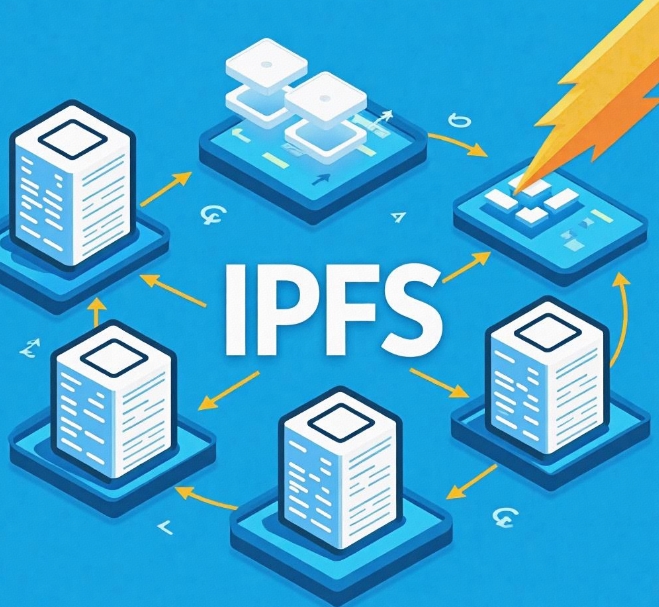On-chain and Off-chain Data Management in Blockchain Development
- latest articles
- 1.DApp Development & Customization: Merging Diverse Market Needs with User Experience 2.Analysis of the Core Technical System in DApp Project Development 3.How to achieve cross-chain interoperability in Web3 projects? 4.How does the tokenization of points reconstruct the e-commerce ecosystem? 5.How to Set and Track Data Metrics for a Points Mall? 6.What is DApp Development? Core Concepts and Technical Analysis 7.Inventory of commonly used Web3 development tools and usage tips 8.Development of a Distribution System Integrated with Social E-commerce 9.Six Key Steps for Businesses to Build a Points Mall System 10.What is DApp Development? A Comprehensive Guide from Concept to Implementation
- Popular Articles
- 1.Future Trends and Technology Predictions for APP Development in 2025 2.Analysis of the DeFi Ecosystem: How Developers Can Participate in Decentralized Finance Innovation 3.From Zero to One: How PI Mall Revolutionizes the Traditional E-commerce Model 4.DAPP Development | Best Practices for Professional Customization and Rapid Launch 5.Recommended by the Web3 developer community: the most noteworthy forums and resources 6.From Cloud Computing to Computing Power Leasing: Building a Flexible and Scalable Computing Resource Platform 7.How to Develop a Successful Douyin Mini Program: Technical Architecture and Best Practices 8.Shared Bike System APP: The Convenient Choice in the Era of Smart Travel 9.How to Create a Successful Dating App: From Needs Analysis to User Experience Design 10.From Design to Development: The Complete Process of Bringing an APP Idea to Life
With the rapid development of blockchain technology, it has demonstrated strong potential across multiple fields, especially in applications within finance, logistics, supply chain, healthcare, and other industries. One of the core characteristics of blockchain is its decentralized and immutable nature, making it an ideal distributed ledger system. However, as blockchain technology matures, effectively managing the relationship between on-chain and off-chain data has become a significant challenge for developers. This article will explore issues related to on-chain and off-chain data management in blockchain development, analyze their characteristics, management methods, and challenges, and discuss how to optimize data management approaches in practical development.
I. Blockchain Data Architecture
In blockchain technology, data is primarily divided into two types: On-chain Data and Off-chain Data. These two types of data have different storage methods and management strategies, so understanding and effectively managing them is key to developing blockchain applications.
1. On-chain Data
On-chain data refers to data stored on the blockchain network, which is transmitted, verified, and permanently stored among nodes in the network through the blockchain protocol. The most significant feature of on-chain data is its immutability; once data is written to the blockchain, it exists permanently and cannot be altered or deleted.
Typical forms of on-chain data include:
Transaction Data: Every transaction is recorded on the blockchain, forming a continuous ledger.
Smart Contracts: The code and execution results of smart contracts also belong to on-chain data.
Token and Asset Data: Tokens, digital assets, NFTs, etc., can be recorded and managed as on-chain data in the blockchain.
Due to the immutability and transparency of on-chain data, many applications and services rely on blockchain to ensure data credibility, especially in fields such as finance, voting, and contract execution.
2. Off-chain Data
Unlike on-chain data, off-chain data refers to all data stored outside the blockchain network. These data are typically stored in traditional databases or file storage systems. Off-chain data management is more flexible, with fewer limitations on storage capacity and computational power. Common examples of off-chain data include:
User Personal Information: Such as name, contact details, address, etc.
Data from External APIs: For example, weather data, exchange rate data, market prices, etc.
Large-scale File Data: Such as videos, audio, images, and other large files, which are generally unsuitable for direct storage on the blockchain.
Off-chain data offers scalability and storage flexibility, but since it lacks the immutability and transparency of blockchain, ensuring its credibility and security is an important issue.
II. Management Challenges of On-chain and Off-chain Data
In blockchain applications, on-chain and off-chain data each have their own advantages and disadvantages, so their management requires reasonable selection and arrangement based on specific needs. The following are some common challenges and difficulties:
1. Data Storage and Cost Issues
The storage cost of on-chain data is typically high. Since blockchain nodes need to store copies of the entire ledger, an increase in data volume leads to rising storage costs. Especially on public chains, as the number of users and transactions increases, the demand for on-chain data storage continues to grow. Therefore, developers often choose to store most data off-chain, keeping only critical data and necessary verification information on-chain.
2. Data Consistency and Synchronization Issues
In blockchain applications, ensuring consistency between on-chain and off-chain data is a significant issue. On-chain and off-chain data are typically managed separately, so inconsistencies may arise in certain situations. For example, when a transaction occurs on-chain, does the related off-chain data also need to be updated? Such synchronization operations require mechanisms to ensure data accuracy and consistency.
3. Data Privacy and Security Issues
Due to its public and transparent nature, on-chain data may face issues of data privacy leakage. Although blockchain uses encryption technology to protect transaction data, in some cases, users' sensitive information (such as identity, address, etc.) may still be exposed. Therefore, protecting user privacy is an urgent issue to address when designing blockchain applications.
In contrast, off-chain data, stored in traditional databases, typically employs more mature privacy protection technologies, such as encrypted storage and access control. However, the security and reliability of off-chain data depend on third-party services, so when managing off-chain data, special attention must be paid to the security of these third-party services.
III. Management Strategies for On-chain and Off-chain Data
To effectively manage on-chain and off-chain data, blockchain developers typically adopt the following strategies:
1. Layered Data Storage
Blockchain applications often use a layered storage approach, dividing data into multiple levels for management. For example, critical transaction data and smart contract information are stored on-chain, while large amounts of non-core data (such as user information, log data, etc.) are stored off-chain. This approach leverages the decentralization and immutability of blockchain while effectively controlling storage costs and scalability issues.
2. Using Hash Values to Link On-chain and Off-chain Data
A common practice is to store the hash value of off-chain data on the blockchain while storing the actual data in external databases or storage systems. This method utilizes the immutability of blockchain to verify the authenticity of off-chain data while avoiding direct storage of large-scale data on-chain. For example, only the hash value of a file is stored on the blockchain, while the file itself is stored in cloud storage. When verifying the file's validity, its integrity can be confirmed by comparing the hash values.
3. Using Decentralized Storage
With the rise of decentralized storage technology, more projects are beginning to use decentralized storage solutions for off-chain data. For example, decentralized storage protocols like IPFS (InterPlanetary File System) and Filecoin can provide efficient and secure file storage services, integrating with blockchain technology to form more secure and decentralized data management solutions. This way, off-chain data no longer relies on a single centralized server, improving data reliability and tamper resistance.
4. Integration of Blockchain with External APIs
In many blockchain applications, off-chain data comes from external APIs (such as weather data, financial data, etc.). To ensure data accuracy and security, developers often use "oracle" technology to fetch data from the external world and import it into the blockchain. Oracles can retrieve data from external APIs and send it to smart contracts, ensuring that smart contracts can make decisions based on the latest external data.
IV. Best Practices in Blockchain Development
To ensure efficient management of on-chain and off-chain data, developers should follow these best practices:
Choose Data Storage Methods Reasonably: When designing blockchain applications, select storage methods based on data characteristics. For critical data requiring immutability, choose on-chain storage; for large-scale data, choose off-chain storage and verify it through hash values or decentralized storage.
Strengthen Data Privacy Protection: Use encryption technology to protect on-chain data, especially sensitive data. For off-chain data, enhance privacy protection by using private blockchains, access control, and encrypted storage.
Use Decentralized Storage and APIs: When storing large-scale data or fetching external data, it is recommended to use decentralized storage and oracle technology to ensure data reliability and security.
Ensure Data Consistency: Synchronization and consistency between on-chain and off-chain data are significant challenges in blockchain development. Developers need to use appropriate synchronization mechanisms and data validation methods to ensure data consistency between the two.
V. Conclusion
The emergence of blockchain technology has brought revolutionary changes to data management, making the management of on-chain and off-chain data a critical issue for developers to consider deeply. Although on-chain data has the advantages of immutability and transparency, its storage cost is high; while off-chain data offers storage flexibility, ensuring its security and credibility remains a challenge. Through reasonable storage strategies, encryption technologies, and decentralized storage methods, developers can optimize the performance and scalability of blockchain applications while ensuring data security. In the future, as blockchain technology continues to evolve, the management of on-chain and off-chain data will continue to face new challenges and opportunities.
-

How to achieve cross-chain interoperability in Web3 projects?
With the continuous development of WEB3 technology, Web3 has gradually become an···
-

Inventory of commonly used Web3 development tools and usage tips
With the continuous development of blockchain technology, Web3 has become a hot ···
-

Web3 development trend prediction: analysis of future technology directions and application scenarios
With the gradual development of blockchain technology, the concept of Web3 has m···

 Blockchain
Blockchain












